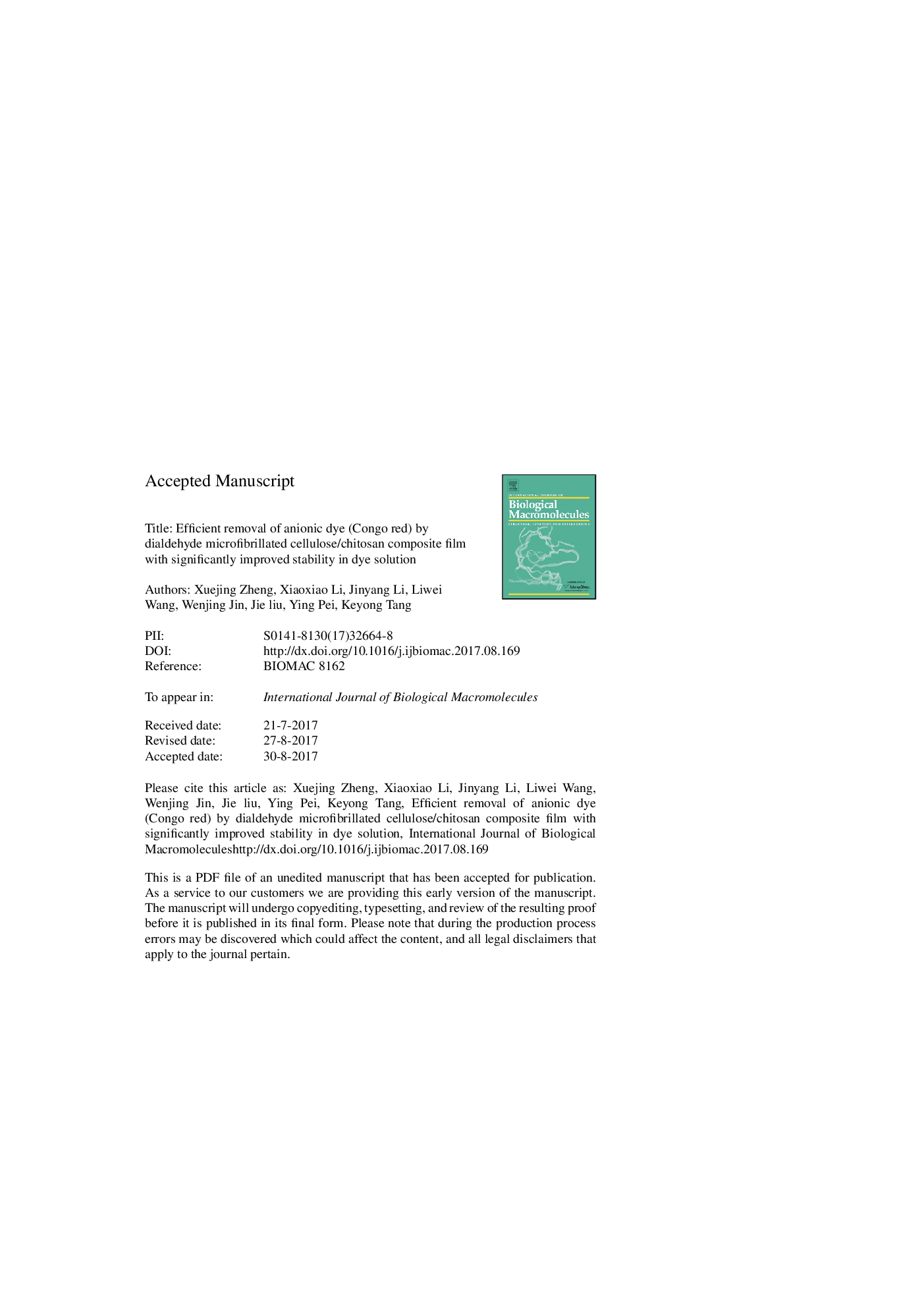| Article ID | Journal | Published Year | Pages | File Type |
|---|---|---|---|---|
| 8328884 | International Journal of Biological Macromolecules | 2018 | 25 Pages |
Abstract
A novel composite film with efficient removal of anionic dye (Congo red) was developed using chitosan and dialdehyde microfibrillated cellulose nano fibrils. Microfibrillated cellulose with three dimensional network structure was prepared from microcrystalline cellulose by high-pressure homogenization. Then it was surface modified by periodate to prepare dialdehyde microfibrillated cellulose (DAMFC). DAMFC/chitosan composite films were prepared by solvent-casting. During the compounding of DAMFC with chitosan, a Schiff base was formed through the reaction between the aldehyde groups of DAMFC and amino groups of chitosan. A giant network structure was therefore formed. The addition of DAMFC resulted in remarkably increased adsorption capacity of the chitosan material as well as drastically improved stability in dye solution. The adsorption performance was investigated with respect to pH, temperature, contact time, and the initial dye concentration. The possible adsorption mechanism was proposed. Various isotherm models have been used to fit the data, and kinetic parameters were evaluated.
Keywords
Related Topics
Life Sciences
Biochemistry, Genetics and Molecular Biology
Biochemistry
Authors
Xuejing Zheng, Xiaoxiao Li, Jinyang Li, Liwei Wang, Wenjing Jin, Jie liu, Ying Pei, Keyong Tang,
